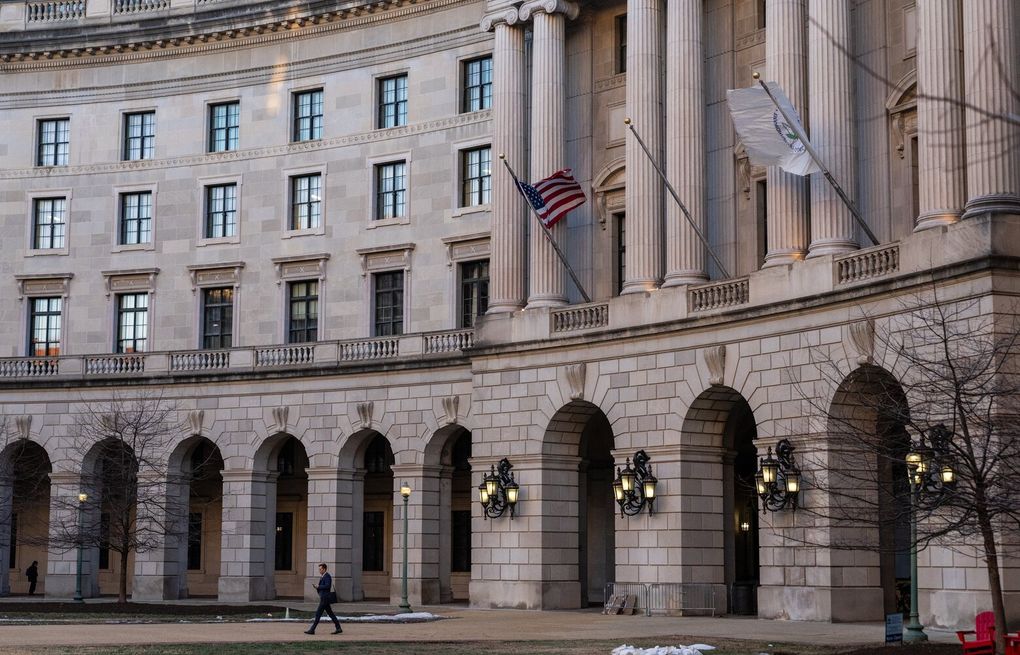
EPA Warns Over 1,000 Employees of Possible Immediate Termination
The recent announcement by the Environmental Protection Agency (EPA) has sent ripples across its workforce and the broader landscape of federal employment. More than 1,000 employees have been notified that they face the risk of immediate termination. The sudden communication has sparked widespread concern among staff members, raising questions about the future operations of the agency.
Understanding the EPA's Decision
The EPA's decision to issue such warnings stems from several complex factors influencing federal agencies. One principal reason revolves around budget constraints and fiscal adjustments mandated by recent legislative changes. The financial landscape has prompted the agency to reevaluate its staffing needs and budget allocations.
Additionally, there is an ongoing push towards restructuring and optimizing federal operations. The goal is to ensure that agencies like the EPA can more effectively meet their mandates. However, achieving these objectives often requires tough decisions, including workforce reductions.
Impact on Employees and Agency Operations
For the employees notified, the specter of job loss creates significant uncertainty. It affects not only their professional lives but also their personal well-being. Many staff members have dedicated years to the EPA, contributing to its mission of protecting human health and the environment.
From an operational standpoint, the potential loss of over 1,000 employees could have profound implications. The agency's ability to conduct environmental assessments, enforce regulations, and engage in scientific research may be considerably hampered. This risk of diminished capacity raises concerns about the agency's ability to meet its statutory obligations and respond to environmental crises.
Reaction from Employee Unions and Advocacy Groups
Employee unions have not remained silent in the face of the EPA's announcement. Union representatives have expressed deep concern over the lack of forewarning and the impact of the decision on job security. They argue that such drastic measures should be coupled with comprehensive plans for re-employment or reskilling opportunities.
Environmental advocacy groups have also voiced apprehensions. They fear that reducing the EPA's workforce could weaken the enforcement of environmental regulations. This concern is particularly pressing in the face of growing environmental challenges like climate change and pollution.
Navigating Uncertain Times
In response to the situation, affected employees are encouraged to explore available resources such as career counseling and federal reemployment programs. These services aim to assist individuals in transitioning to new roles within or outside government service.
Moreover, employees can benefit from engaging with their unions and participating in discussions about potential alternatives to job termination. Constructive dialogue between the agency's leadership and its workforce may identify viable solutions that balance budget constraints with employee needs.
The Road Ahead for the EPA
Looking forward, it is imperative for the EPA to approach this transition with transparency and sensitivity. Building trust with employees and stakeholders requires clear communication about the rationale for staffing changes and the measures being taken to support affected individuals.
Furthermore, the EPA must consider innovative strategies to maintain its operational effectiveness amid workforce reductions. This could involve leveraging technology, fostering public-private partnerships, and enhancing collaboration with other agencies and organizations.
A Broader Perspective on Federal Workforce Challenges
The EPA's current predicament is reflective of a broader trend confronting many federal agencies. Balancing budgetary restrictions with the need to fulfill critical missions remains a persistent challenge. Agencies must continuously adapt to shifting political, economic, and environmental landscapes.
For policymakers and leaders, the situation underscores the necessity of a long-term vision for federal workforce management. It calls for strategies that prioritize both organizational efficiency and employee welfare. Upholding the well-being of public servants is essential to sustaining the efficacy of federal operations.
Understanding the Environmental Implications
The ripple effects of a downsized EPA workforce could extend beyond the agency itself. There's a critical need to maintain the momentum in addressing pressing environmental issues. The potential workforce reduction highlights the importance of public engagement and collaboration with state and local agencies to uphold environmental standards.
Strategies for Community Involvement
To counteract potential setbacks, community involvement will be crucial. Engaging local communities, educational institutions, and nonprofit organizations in environmental initiatives can help bridge any gaps created by the reduction in EPA staffing. These collaborations can foster a shared responsibility in nurturing sustainable practices and advocating for robust environmental legislation.
Role of Innovation and Technology
Amidst resource constraints, innovation serves as a beacon for the future of environmental management. The EPA could capitalize on new technologies and data-driven approaches to enhance its efficiency. Embracing advancements in artificial intelligence and big data analytics can streamline processes, enabling the agency to continue its mission with fewer resources.
Conclusion
The EPA's notification to over 1,000 employees regarding possible immediate termination has raised significant concerns for both the workforce and stakeholders. As the agency navigates this challenging phase, balancing fiscal necessity with operational integrity and employee welfare remains paramount. While the future may be uncertain, the collective effort of the EPA, its employees, and the broader community will be instrumental in ensuring the resilience and efficacy of environmental protection efforts.
Through dialogue, collaboration, and a commitment to innovation, there is hope that the EPA can evolve to meet the demands of a changing world while safeguarding the principles of environmental stewardship.


